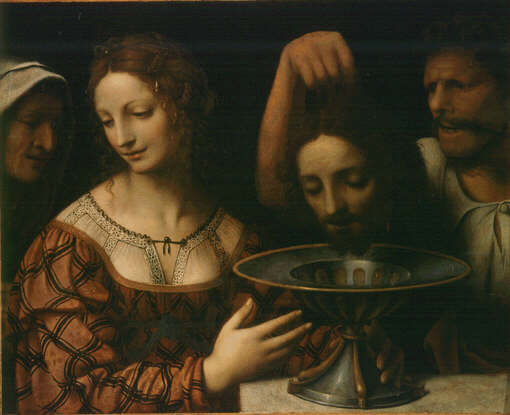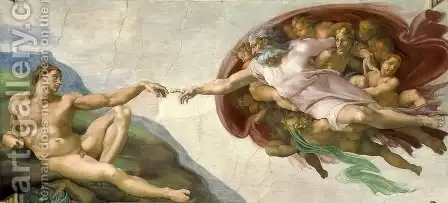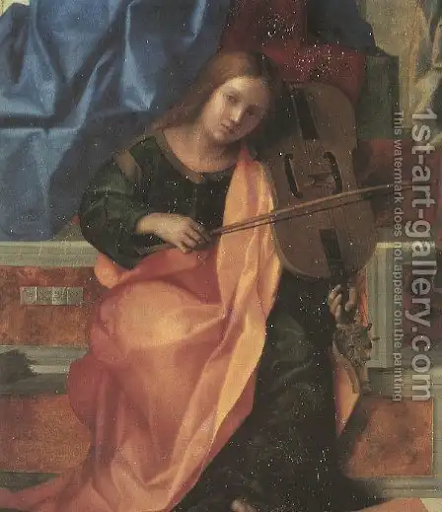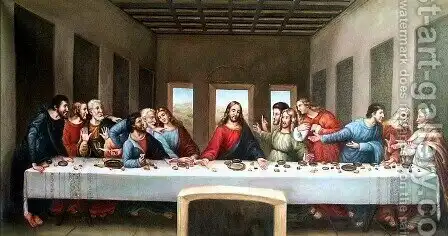The Renaissance is known as the art period, where artists focused on religion as their central theme. As a result, many artworks were commissioned by the heads of religious movements. For instance, the Pope, as head of the Roman Catholic Church, commissioned many works.
Religious movements saw paintings as a way to communicate with their followers. Many people in the 14th to 17th centuries didn’t know how to read, and paintings were a visual way to convey religious messages. In addition, art was used as a powerful tool to control the masses through visualization. Even if you can’t read, you can still look at a painting and see what it shows.
In this article, we’ll look at some of the most famous religious paintings created in the Renaissance by great masters of the time. Then, we’ll briefly discuss one work of the following six favorite artists.
The Last Supper by Leonardo da Vinci
One of the most famous Christian paintings from the Renaissance is “The Last Supper” by Leonardo da Vinci (1452-1519). He was an Italian artist during the High Renaissance who was a painter, engineer, scientist, theorist, sculptor, draughtsman, and architect.
“The Last Supper” was painted from 1495 to 1498 on the back wall of the dining hall of the beautiful Dominican convent of Santa Maria in Milan, Italy. The painting depicts the scene of the Last Supper of Jesus with the twelve Apostles, as told in the Gospel of John. In addition, it shows the moment after Jesus has announced that one of his apostles would betray him.
Da Vinci created it by employing experimental pigments directly on the drywall. Unfortunately, this technique lets the paint flake off the wall. Before it was finished, it had already suffered from paint flaking. Although the damage was repaired, it kept on crumbling over the years.
It was also damaged by the Napoleon troops and bombing in 1943. So what is seen in the painting today are mainly repairs.
Salome with the Head of Saint John the Baptist by Bernardino Luini

Bernardino Luini (1480-1532) was a North Italian painter and part of the Leonardo circle during the High Renaissance. He is sometimes described as an artist who has taken many characteristics and techniques of Leonardo and made them his own.
His “Salome with the Head of Saint Johan the Baptist” depicts a scene from the Gospel of Mark, where Salome demands the head of John the Baptist as a reward for having danced before King Herod and his guests. However, the King had promised to give her anything she wanted and had to agree. So, John the Baptist was beheaded in prison, bringing his head to Salome.
The work is currently located in the Museum of Fine Arts in Boston.
The Creation of Adam by Michelangelo

“The Creation of Adam” is another one of the famous biblical paintings of the Renaissance. It was painted in the Sistine Chapel in Vatican City and was finished in 1512. It is also one of Michelangelo’s most well-known artworks (1475-1564). The painting illustrates the Biblical creation story in the Book of Genesis. It depicts the moment when God gave life to Adam, the first man.
Over centuries the painting suffered from candle smoke damage by the priests. Today, the fresco is dark and shadowy because of the candle smoke’s effects. It was restored in 1980, but many art critics and historians dislike how it was restored. According to them, the restored version is different from the original.
San Zaccaria Altarpiece by Giovanni Bellini

Giovanni Bellini (1430-1516) was an Italian Renaissance painter and the most renowned of the Bellini family of Venetian painters. Bellini was raised in the household of Jacopo Bellini. Interestingly, it has been believed that Jacopo was his father, but nowadays, the relationship is questioned.
“San Zaccaria Altarpiece” is one of Bellini’s oil canvasses and was painted in 1505. The Virgin Mary is depicted with baby Jesus in the center and the four Christian saints with an angel playing the violin at the foot of the altar. It is currently located in the San Zaccaria church in Venice, Italy. The painting is an excellent example of the so-called “sacra conversazione” or “sacred conversation” developed by Renaissance Italian artists.
The Wedding at Cana by Paolo Veronese
Paolo Caliari, known as Paolo Veronese (1528-1588), was an Italian Renaissance painter based in Venice. He is known for his enormous history paintings of religion and mythology. One of his famous religious paintings is a painting depicting the Bible story of the marriage at Cana. It was a wedding banquet at which Jesus converted water to wine.
“The Wedding at Cana” was painted in 1563 for the Benedectine Monastery of San Giorgio Maggiore in Venice. Apart from over 130 guests, including some very famous ones and fascinating architecture, Veronese also included himself in the center of the composition. He is dressed in white and plays a viola da braccio. The painting is currently exhibited in the Louvre Museum in Paris.
Madonna del Prato by Raphael
“Madonna del Prado,” one of Raphael’s many Christian paintings, depicts Virgin Mary looking down at baby Jesus and his cousin John the Baptist, kneeling and offering a cross to Jesus. It is currently exhibited in the Kunsthistorisches Museum in Vienna.
Raffaello Sanzio da Urbino, known in the art world only as Raphael (1483-1520), was an Italian painter and architect of the High Renaissance. His works are known for the clarity of form and ease of composition. Raphael, Michelangelo, and Leonardo da Vinci formed the traditional trinity of great masters of the Renaissance art period.
Conclusion
The Renaissance period is known for the many Biblical paintings which were created in that period. Virtually all great Renaissance painters created paintings and frescos with Biblical themes. Most of the works were commissioned works.




![Is Tokyo Ghoul on Netflix? [How to Watch Online]](https://avctv.com/wp-content/uploads/2022/08/AAAABct1DaUzhEt4JeJFeDrmaE_4CGAu39fBN6poMx10hAlWlMRjkkAw84hjmuujWTy2wFC7_Pjnujec-_PqT1GCnnMFMJ15S04baJn1b0WvvbG6hrSNb31_GS4--120x86.jpg)





